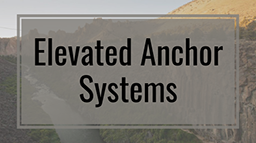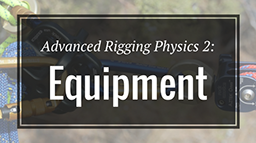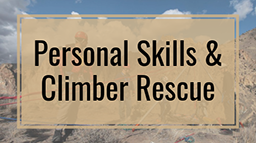Learn about rope systems and their various parts and components in the exclusive Elevated Anchor Systems course.
About the Course
The use of elevated anchors (i.e. high directional anchor systems) is a mandatory requirement of NFPA 1670 for rope technicians. Having said this, it’s impossible to discuss one facet of rope rigging and not address all the many other aspects at the same time. A rope system is like a living breathing thing; like any living thing, it’s composed of many cells and body parts. Yes, these many parts are separate components, but without a realization of the whole body, each component means little. This is the essence of the knowledge base that rope rescue technicians must try to ascend to. And this is what we’re working towards in the Elevated Anchor Systems course.
Checklist
Include a list of items to support the central theme of your page. Bulleted lists are a great way to parse information into digestible pieces.
Text length of individual points can be shorter or longer depending on your needs
What an Edge Management is at the heart of Elevated Anchors
Safety considerations
Resultants
Back-ties
How Elevated Anchors and Horizontal Systems work together
And more!
Course Curriculum
Unit 1: Welcome
1.1 Welcome
1.2 Physics for Roping Technicians Manual
1.3 Schematic Overview: What Elevated Anchors Might Look Like Through AHDs
1.4 Schematic Overview: What Elevated Anchors Could Look Like within A Horizontal System
Unit 2: Examples of Elevated Anchors, Part 1
2.1 Examples of Elevated Anchors, Part 1
2.2 Video Tutorial: Tension & Compression Study
2.3 Video Tutorial: Aerial Ladders Used as an Artificial High Directional
2.4 Video Tutorial: Example of Using an Elevated Anchor (AHD) at the Edge of a Cliff
Unit 3: Examples of Elevated Anchors, Part 2
3.1 Examples of Elevated Anchors, Part 2
3.2 Video Tutorial: Gin Pole Usage Overview
3.3 Video Tutorial: Managing Edge Friction With a Monopod / Gin Pole as a High Directional
3.4 Video Tutorial: Industrial Skate Block – Tensioned Track Line – Using a Gin Pole
3.5 Video Tutorial: Anchor Considerations When Using Elevated Anchors
3.6 Video Tutorial: Marginal Anchors When Using Elevated Anchors
3.7 Video Tutorial: Arizona Vortex SA Frame with a Compression Member
3.8 Quiz: Examples of Elevated Anchors, Part 2
Unit 4: AHD Within a Rescue
4.1 AHD Within a Rescue
4.2 Video Tutorial: Cliff Rescue High Directional and Tracking Line, Part 1
4.3 Video Tutorial: Cliff Rescue High Directional and Tracking Line, Part 2
4.4 Video Tutorial: High Angle Raise with Vortex Side A-Frame, Part 1
4.5 Video Tutorial: High Angle Raise with Vortex Side A-Frame, Part 2
4.6 Quiz: AHD Within a Rescue
Unit 5: Guying
5.1 Guying
5.2 Video Tutorial: Arizona Vortex Artificial High Directional A-Frame Single Front Guy
5.3 Video Tutorial: Elevated Anchor in Horizontal Rigging: Guying Systems
5.4 Video Tutorial: Guying Through a Truckers Hitch
5.5 Video Tutorial: Guying Through an Advanced Tech Haul System Leg
5.6 Video Tutorial: Guying Through a Progress Capture Tension Leg
5.7 Quiz: Guying
Unit 6: Aerial Ladders
6.1 Aerial Ladders
6.2 Video Tutorial: Aerial Ladders Used as an Artificial High Directional
6.3 Quiz: Aerial Ladders
Unit 7: Other Types of Elevated Anchors
7.1 Other Types of Elevated Anchors
7.2 Video Tutorial: Elevated Anchors In Mirrored Skate Block Top Anchor Overview
7.3 Video Tutorial: Elevated Anchors in Mirrored Skate Block Top Anchor Considerations
7.4 Video Tutorial: Two Rope Offset Using Natural High Directional
7.5 Quiz: Other Types of Elevated Anchors
Unit 8: Wrap Up
8.1 Wrap Up
Added Perks
Additional features Rigging Lab Academy Members are enjoying
Certificate of Completion
Download your personalized Certificate of Completion after completing the course.
100% Self-Paced
Go through the course material as fast or as slow as you’d like.
Private Discussion Board
Ask questions, meet other students, and even chat with the course instructor.





